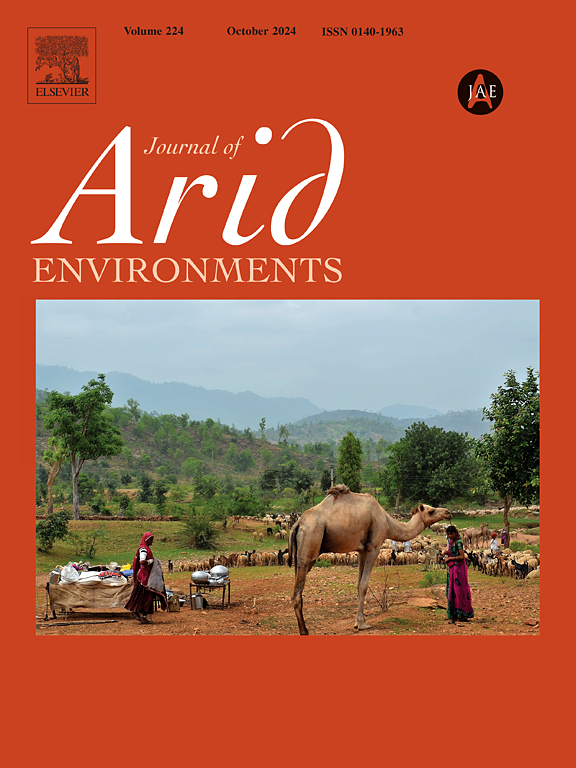气候变化背景下沙丘迁移风险预测:结合机器学习、深度学习和遥感指标的混合方法
IF 2.5
3区 环境科学与生态学
Q2 ECOLOGY
引用次数: 0
摘要
考虑到气候变化对干旱加剧、沙丘迁移的影响,以及对邻近地区和空气质量的相关风险,评估这些危害对有效的土地管理至关重要。本研究旨在利用机器学习和深度学习算法来提高图像质量和描绘沙丘范围,确定提取沙丘形态特征的最佳尺度,预测沙丘迁移,预测气候参数及其与形态特征的关系。结果表明,深度迭代融合网络模型有效提高了沙丘及其形态特征提取的图像质量,提取精度较高。此外,将形态测量学和光谱特征整合到一种新的土地利用地貌(LULF)地图中,可以高精度地精确识别沙漠环境中的地貌和物体,包括沙丘范围。研究结果还表明,光谱反射率的变化,特别是反照率和红外波段的变化,不仅影响沙丘高度探测,而且影响沙丘迁移速度。此外,马尔可夫模型结果表明,未来几年反照率和红外反射率的增加将增加周边地区沙丘迁移的风险。自回归综合移动平均模式预测未来风速为8.3 ~ 83.3 km/h,风向由东南向西北,反映了沙丘迁移加剧,对邻近地区的风险增加。本文章由计算机程序翻译,如有差异,请以英文原文为准。
Predicting dune migration risks under climate change context: A hybrid approach combining machine learning, deep learning, and remote sensing indices
Given the impacts of climate change on increasing aridity, dune migration, and associated risks to adjacent areas and air quality, assessing these hazards is critical for effective land management. This study aims to utilize machine learning and deep learning algorithms to enhance image quality and delineate sand dune extents, identify optimal scales for extracting dune morphometric features, predict dune migration, and forecast climatic parameters and their relationships with morphometric characteristics. Results demonstrate that the deep iterative fusion network model effectively improves image quality for extracting dunes and their morphometric features with high accuracy. Furthermore, integrating morphometric and spectral features into a novel Land-Use Land-Form (LULF) map enables precise identification of landforms and objects in desert environments, including sand dune extents, with high accuracy. The findings also indicate that variations in spectral reflectance, particularly albedo and infrared bands, influence not only dune height detection but also dune migration speed. Additionally, the Markov model results suggest that increased albedo and infrared reflectance in the coming years will heighten the risk of dune migration in surrounding areas. Finally, the autoregressive integrated moving average model predicts future wind speeds ranging from 8.3 to 83.3 km/h, moving from southeast to northwest, reflecting intensified dune migration and increased risks to adjacent regions.
求助全文
通过发布文献求助,成功后即可免费获取论文全文。
去求助
来源期刊

Journal of Arid Environments
环境科学-环境科学
CiteScore
5.70
自引率
3.70%
发文量
144
审稿时长
55 days
期刊介绍:
The Journal of Arid Environments is an international journal publishing original scientific and technical research articles on physical, biological and cultural aspects of arid, semi-arid, and desert environments. As a forum of multi-disciplinary and interdisciplinary dialogue it addresses research on all aspects of arid environments and their past, present and future use.
 求助内容:
求助内容: 应助结果提醒方式:
应助结果提醒方式:


